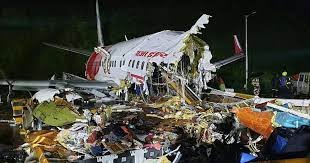In 1997, an NGO called the Environment Support Group based in Bangalore took a bold step by filing a public interest litigation (PIL) in the Karnataka High Court. Their primary concern was regarding the construction of a second runway at Mangalore airport and its potential failure to meet necessary safety standards during landings and take-offs, especially in emergencies. Despite their efforts, the court dismissed the PIL, dismissing the worries raised by the group.
Undeterred, the Environment Support Group filed a new PIL in 2002, reiterating their concerns and even warning that a catastrophe could occur, with planes potentially crashing down the hillsides from a significant height of 80-100 meters. However, once again, their plea fell on deaf ears as the court dismissed the PIL without giving due consideration to the potential risks involved.
Dissatisfied with the court’s response, the NGO challenged the verdict in the Supreme Court, seeking justice and hoping to bring attention to the imminent dangers. Unfortunately, the Supreme Court upheld the previous decision, stating that there was no reason to interfere. However, they did clarify that the government must comply with all applicable laws and environmental norms while constructing the airport.
Tragically, the government agencies responsible for the construction of Mangalore airport failed to comply with the laws and norms, leading to a devastating incident on May 22, 2010. Air India Express Flight 812 overshot the runway during landing, hurtling down the hillside, exactly as the petitioners had warned years before. The plane ultimately burst into flames, claiming the lives of 158 individuals on board. The consequences of the government’s non-compliance and negligence were now tragically evident.
In a desperate attempt to seek justice and hold the responsible parties accountable, the NGO once again approached the Supreme Court with a PIL, presenting evidence of the numerous violations that had occurred. Shockingly, the Supreme Court dismissed this PIL as well, demonstrating a reluctance on the part of the judiciary to take action against government agencies. Instead, the blame was solely placed on the pilot of the aircraft.
To make matters worse, a cover-up report was issued, filled with a well-orchestrated web of lies, effectively diverting attention from the systemic failures that led to the tragic incident. This report hindered the learning process and prevented necessary measures from being implemented to prevent a recurrence of such a disaster.
The dismissals of the PILs and the subsequent blame placed solely on the pilot reveal a systemic problem within the judiciary and the reluctance to hold government agencies accountable for their actions. In failing to acknowledge the warnings and concerns raised by the NGO, the authorities missed an opportunity to prevent the loss of numerous lives and address the underlying issues that led to the tragic crash.
The Mangalore airport incident stands as a stark reminder of the consequences of neglecting safety standards and the potential ramifications of disregarding public concerns. It highlights the urgent need for a more proactive approach in addressing such issues and ensuring that government agencies adhere to the established laws and environmental norms, ultimately prioritizing public safety above all else.


